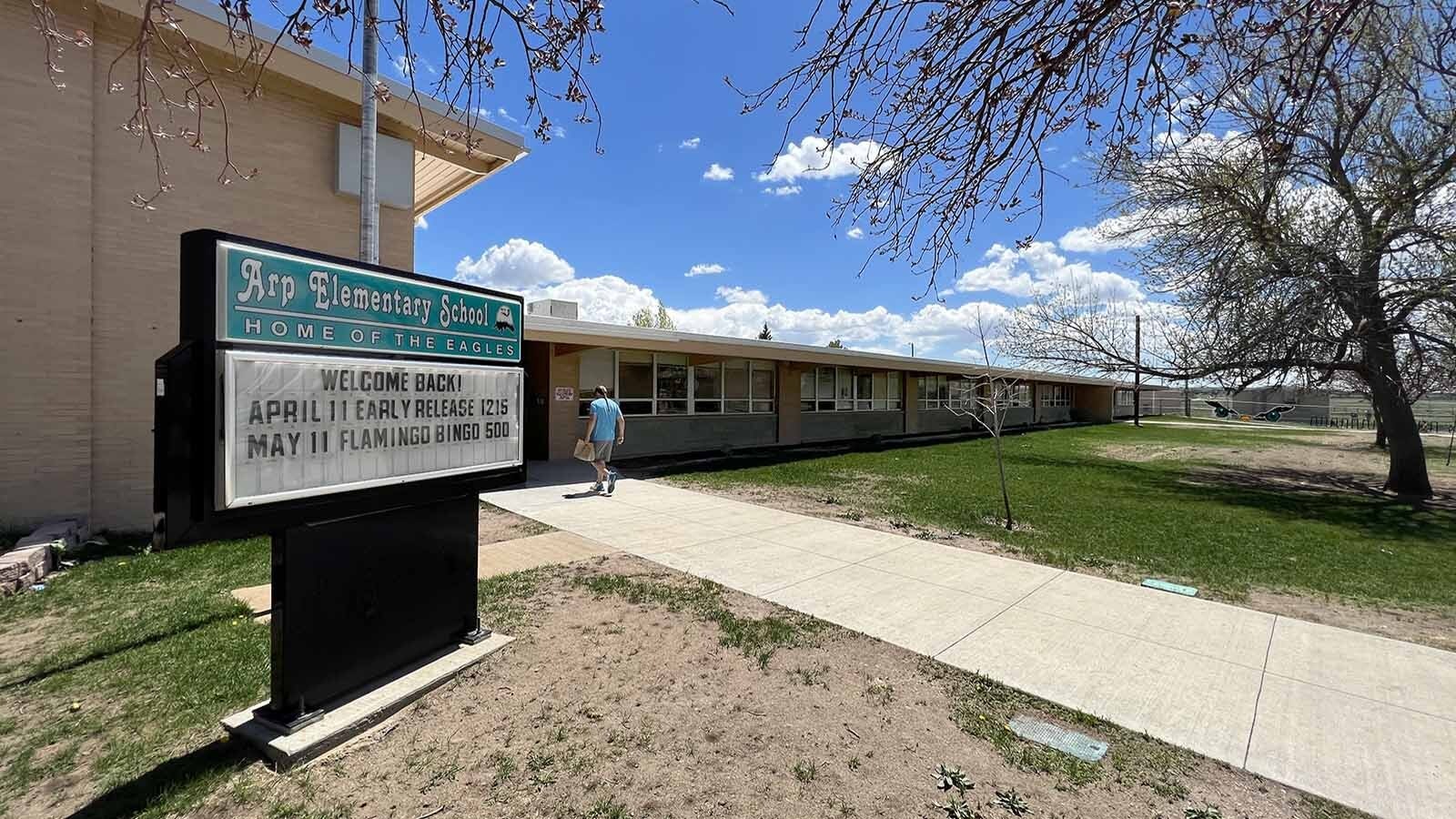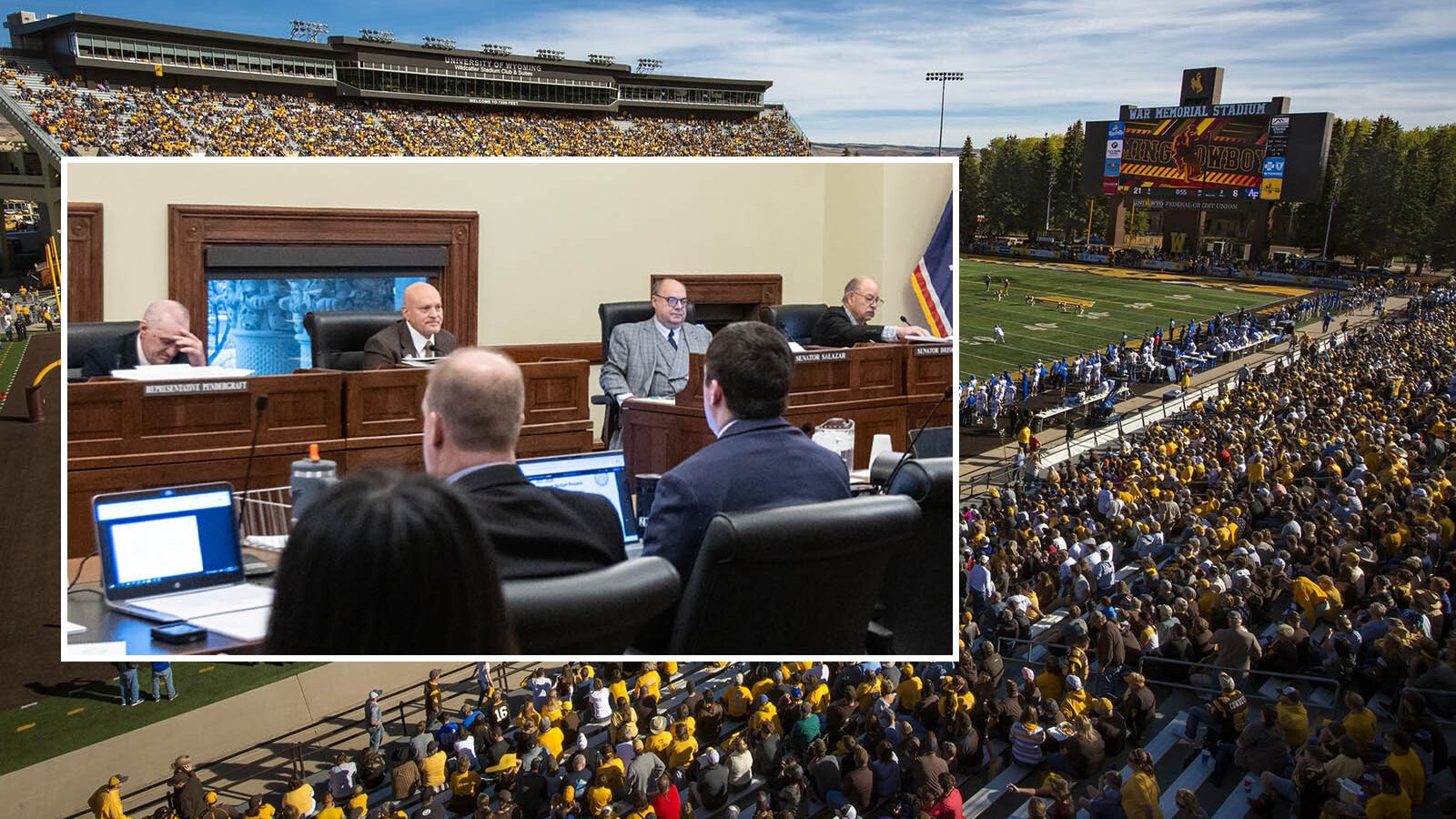The Senate Education Committee passed a resolution Monday to ask voters to amend the Wyoming Constitution to dramatically change the way school construction is approved and funded in Wyoming.
Senate Joint Resolution 6 passed on a 3-2 vote with Sens. Charles Scott, R-Casper; Evie Brennan, R-Cheyenne; and Jared Olsen, R-Cheyenne, voting in support; and Sens. Wendy Schuler, R-Evanston, and Chris Rothfuss, D-Laramie, against.
SJ 6 would overturn the previous Wyoming Supreme Court rulings that made school construction a state responsibility and would return Wyoming to its previous school bond system that was used for nearly 110 years. It was that system that led to a series of lawsuits in the 1990s and early 2000s that led to the current funding model used today.
The way the old and proposed system works is that school districts must go to their local voters for approval of bond initiatives that would be used to increase mill rates in order to provide funding for all new construction projects, a tax structure that’s used in many states across the U.S.
School construction in Wyoming is now based on a complicated needs formula performed by the state, with funding and final approval for projects given by the Legislature.
Scott, the bill sponsor, believes the state has spent three times as much on school construction as it’s really needed since 2001.
“Frankly, the current system has been a pork barrel system because every legislator has to defend their home school district,” Scott said. “Nobody knows enough to say no to another school district, and it would be remembered if we did.”
Would Need A Vote
If the resolution is passed by the Legislature, it would still need to go before the voters in 2026 to make an amendment to the state Constitution.
Even if passed by voters, mandatory school finance equalization aid would still be used by the state, another mandate also established by the state Supreme Court. The aid would increase the amount raised by local taxes up to the amount of what a statewide levy would raise on a per person basis.
The cost of paying bonds and interest would be equalized so that the required school district mill levy does not exceed what the mill levy would be if the district had an assessed valuation equal to the state average per person assessed valuation. Funding for the equalization could come from a statewide mill levy.
If adopted, the Legislature would create a system to determine which capital facilities are not needed for education and thus not qualify for the equalization.
There were more than 100 people at Monday’s meeting at the state Capitol in Cheyenne, with around 50 having to watch the meeting from an overflow room across the hall from the committee room.
Few Happy With The Status Quo
Scott is a firm believer that Wyoming is not getting its money’s worth for school funding based on student test scores.
He also said the current school construction funding model no longer works because of the disappearance in coal lease payments from the federal government and declining reliance on the School Foundation Program for school construction. The general decline in mineral revenues in Wyoming has put the future of school and state funding in doubt in recent years.
“For those reasons, we’re looking for an entirely different system,” Scott said.
Ken Decaria, director of government relations for the Wyoming School Boards Association, which opposes the bill, said when Wyoming switched to the coal lease bonuses system in 2001 after the completion of the Campbell II Wyoming Supreme Court decision, it was never looked at as a permanent solution.
That court decision ruled that Wyoming school construction must be made based on the wealth of Wyoming as a state as a whole and not local wealth.
Decaria believes funding school construction locally will create more inequity as voters in wealthier areas will have less of a tax burden to fund new schools than in less affluent areas, which Scott admitted is true.
Superintendent of Public Instruction Megan Degenfelder told Cowboy State Daily she’d similarly prefer restructuring the school facilities funding model than passing SJ 6.
“I’m not sure the Wyoming people are prepared to find where the other revenue comes from to fund those projects,” she said.
But she also believes inequity already exists within the current model, which she described as “broken.” She pointed to the fact that the communities surrounding Kelly Walsh and Pinedale high schools provide a significant amount of money to the state through mineral production, yet those schools are suffering from substandard facilities.
“We’re already inequitable at the moment,” she said.
Decaria suggested an amendment to the language that would go to voters on the ballot, clarifying that approving the measure would shift the burden for building schools from the state to local communities, and giving the Legislature the authority to initiate a new tax to support funding equalization aid.
The committee accepted the first part of that amendment but not the tax aspect.
Handing It To Voters
Schuler expressed concern that handing off school construction decisions to local voters might lead to a downturn in facilities being approved. She was a teacher prior to the Campbell II decision and believed the bond system worked at the time, but also said a different economic climate existed.
“We had a ton of money, we were in an oil boom, no problem — it zipped right through,” she said. “I don’t know that we could pass one in any one of the districts that I represent right now, and I don’t know that we should try to do that right now.”
Scott said before Campbell II, voters were open to approving school projects in Natrona County if they were really needed, but if it “got gold-plated, they wouldn’t pass it.”
Jeremy Smith, business manager for Sheridan School District No. 1, accused the Legislature of not listening to school officials about the school construction issue.
“If you have a certain amount of high schools, and you expect them to last a certain amount of years, that means you just have to build a certain number every year — good, bad or indifferent, rain or shy, you just build a certain number,” he said.
A number of school officials expressed concern that handing off the decision about whether to pursue local school construction to local voters would not be a winning endeavor.
Converse County School District No. 2 Board Chair Casey Tillard agreed with Degenfelder’s sentiment, mentioning how his community of Glenrock gave $24.7 million to the state for school funding while only receiving back $10 million. This dynamic alone, he said, would make it nearly impossible to pass a bond with local voters.
“I just have a really hard time believing that Converse County would buy that, and we would never get it passed,” Tillard said. “I’m curious how we would stay in business.”
Charles Auzqui, superintendent at Johnson County School District No. 1, said it would have to go to the voters for ongoing maintenance costs as well.
He said approving new HVAC projects to maintain current school usage in his community would be “a hard push” due to the amount of money available in smaller communities like Kaycee.
“It’s not about building a new school, it’s about maintaining some of the costs with HVAC projects,” he said.
Scott said the resolution would have no impact on major maintenance funding, which is also approved by the state.
Decario and Smith also said it might be exceptionally difficult to attain local approval for the construction of a charter school, as these schools typically serve a much smaller number of students.
Scott said state-authorized charter schools could continue to use facilities through lease agreements.
Debate
Rothfuss spoke against the bill, although he does agree the state needs to find an issue for its school construction funding problem. He said the bill represents legislating through the constitution rather than simply passing off a decision to local voters.
“It doesn’t lend itself to a long-term solution, because we don’t know how well this is going to work,” Rothfuss said.
He also said even with the equalization factor built in, funding school construction locally would constrain local resources to build schools, which he said would create even more inequities among more- and less-affluent communities.
Schuler agreed and said the timing of the resolution is bad when considering how much property tax relief is being considered in the Legislature. Nearly 70% of property tax revenue goes to local schools.
Olsen countered that whatever happens with property taxes, public schools are protected with funding for the Legislative Stabilization Reserve Account (LSRA). Rothfuss said this is only true as long as the LSRA still has money in it.
Leo Wolfson can be reached at leo@cowboystatedaily.com.








